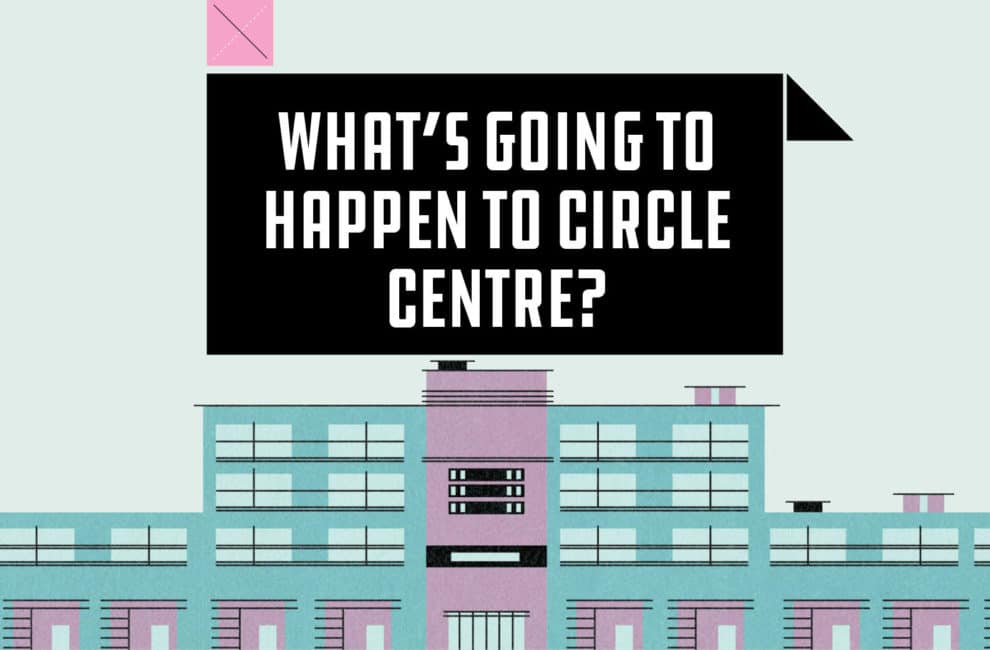What’s Going To Happen To Circle Centre?

Almost anyone who came of age in the ’70s and ’80s spent some leisure time strolling the spacious halls of an enclosed shopping mall. They popped up like dandelions across suburbia as historic downtowns collapsed. By the early ’90s, most medium-sized cities were busy building a multi-floor mall in the hopes of revitalizing the hollowed-out urban areas the malls themselves had helped to create. And in Indy, from 1995 onward, people thronged to Circle Centre.
The urban-suburban hybrid worked well for about 20 years. But as online retail took off, Americans retreated from shopping at brick-and-mortar stores as a leisure experience. After losing Nordstrom in 2011, the owners of Circle Centre—Simon, Lilly, and the City of Indianapolis—sought a replacement department store, but none took the bait. Three years later, the downsized offices for The Indianapolis Star took part of the upper Nordstrom levels. Per-square-foot sales remained stable for a few more years, due largely to the restaurant tenants that absorbed most of the street-level exposure. But the outlook for Carson’s, the mall’s only surviving anchor tenant, got worse and worse. The parent company, Bon-Ton Stores, Inc., announced last month that it would close the store. Now that the downtown mall has lost its only department store, many of the remaining tenants may jump ship.
Circle Centre clearly needs a reinvention. Many downtown residents have been pleading for an urban Target, but the Minneapolis-based retailer tends to be picky about its buildings, and city leaders have unsuccessfully courted the company in the past. Another option would be nostalgia-centered: to revert the grand old facades along Meridian and Illinois streets back to small-scale commercial, with retail at the street level and offices above. But that would isolate the interior space.
The most credible solution fulfills a need and reconfigures the mall entirely: an Indiana Convention Center expansion. Carson’s and the remaining Nordstrom space could serve as exhibition halls, and smaller storefronts could operate as seminar rooms.
Major conventions like Future Farmers of America and Gen Con have already maxed out Indy’s capacity to host them (750,000 square feet), and continued growth could force them elsewhere if Indy doesn’t enlarge its space. What’s more, broadening the Convention Center to more than 1 million square feet would put the city in competition for huge events such as the International Manufacturing Technology Show (115,000 attendees) that normally only consider top-tier locations such as Chicago and Las Vegas. And an expansion would lead to ancillary benefits: additional hotel rooms, more nonstop flights, increased demand for restaurants.
Of course, plenty of things stand in the way. Connecting the existing facility to the mall without expanding the network of maligned, street life-killing skyways would be tough. Indy’s last Convention Center expansion in 2011 cost nearly $300 million—this would almost certainly be more. And that’s to say nothing about convincing Circle Centre’s multiple owners to agree to it. But the increased traffic flow might even salvage a few key retailers, as in Seattle’s Convention Center. If that facility can straddle a freeway, what’s stopping Indy’s next big thing from stretching across Capitol Avenue?
To read more of Eric McAfee’s thoughts on development here and elsewhere, check out dirtamericana.com.





